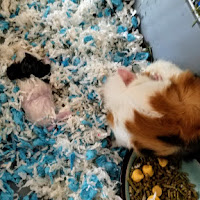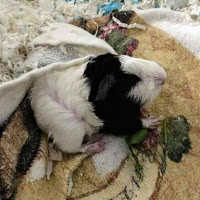- 9/5/17: Corona Canyon fire starts to burn. Six days later, the fire was at 95% containment. Over 2600 acres were destroyed; 4 homes, 1 business, and 1 out-building were damaged; no lives lost.
- 10/8/17: Begins a "complex" of fires in the wine country of northern California. Just a few days later on the 12th, 21 separate fires continued to blaze, most with less than 5% containment, across 8 counties. More than 190,000 acres of land had already burned; more than 3500 structures were already damaged or destroyed, including entire communities; 29 confirmed deaths by this point; hundreds of people were unaccounted for. At the time and possibly even still, these were considered to be the worst fires in California history.
- 10/9/17: Canyon Fire 2 erupts in the Anaheim Hills. By 10/12, it was 60% contained and had burned over 9200 acres; 23 structures destroyed, 36 structures damaged; 3 injuries, but thankfully no lives lost.
I had been feeling desperate since the Canyon 2 fire started, not out of fear,
but for the heart-breaking destruction of wildlife and people's lives. The
Nor-Cal fires were on an incomprehensible scale. Many were left with no home,
no jobs, no businesses, and only whatever items they could toss into a
suitcase within 15 minutes before emergency evacuation. Pets and livestock --
there are a lot of farms and ranches up there -- had to be considered. Some
were able to take their pets to their safe places, but many had to drop their
animals off at shelters for any number of weeks, if they were able to return
at all. Sites were set up in So- and Nor-Cal at fairgrounds and schools to
take in animals, especially livestock. Shelters around California were already
filled to the brim, having already taken in multiple airplanes' worth of
animals rescued from the hurricanes that year in the southeast. The call for
foster homes became even more urgent to make room for these latest evacuees.
I wanted to go out and help the firefighters. I wanted to rescue every last
one of the animals and people, and help them find safe places to stay. I even
wanted to somehow make it rain! I am, and always have been, a helper. So
I did the quickest and easiest thing I could think of -- I offered to foster
any small animals the Napa County Animal Shelter
had taken in. Only an hour later they contacted me back to ask if I would take
some guinea pigs. I was already 20 minutes along the route to the shelter
while dropping my husband off at work -- by coincidence, not our typical
routine for that particular time of day -- when I got the reply. All he said,
with a smile, was: "Go." Off I went!
The fumes had already started to tickle my throat at his office, but by the
time I got over the bridge to the other side of San Francisco, I had to close
all the car windows. It had been fairly smoky at our place, almost 2 hours
south, since the second day of the fires, forcing us to keep the windows
closed, but it was nothing compared to this. I was in San Jose the day before
Operation Wheek-Wheek, where the smell and haze of fire was still surprisingly
noticeable. Someone said that the air was fouled all the way down to Morgan
Hill, an hour south.
At the shelter, there were piles of pet supplies of all kinds in the lobby. Apparently, they accept and receive donations all the time, but the current supply was much more than usual. While I waited for the pigs, at least a dozen people came in to drop off donations; offer to help do anything needed; offer the use of horse trailers, time, and vehicles to evacuate animals, or move them between sites; and foster the pets that were already up for adoption to clear more room for the emergency arrivals. I observed a number of heartbroken owners handing over their beloved pets to a staff of super people, showing each of them the patience and compassion they needed.
Two families who were able to return home came to reclaim pets that they’d evacuated days earlier -- an unfortunately rare story in this disaster.
Half a dozen or so others simply came to visit and care for the pets they were boarding there because they couldn't yet go home, but missed their furry friends.
Two ladies tearfully dropped off cats that they couldn't take with them to the evacuation shelter. One was an elderly woman who could barely speak from trying to hold back her tears as she filled out the paperwork and turned over her beloved kitty. The other was a middle-aged lady whose tears flowed freely. They had no idea when they'd be able to have their pets back, if ever. A staff member walked them back to the kennels to show them where their pets would be, trying to reassure them that they would be safe and cared for. You could tell that these cats were everything to these ladies and that on top of dealing with the trauma of their own evacuation, having to be separated from their pets was at least as devastating as the idea of losing their homes.
A little while later, a couple came in with a Rubbermaid tote with holes drilled into it as a make-shift carrier to evacuate their rabbit.
A shelter staff member arrived with a jug of distilled water for a goldfish that someone had evacuated overnight. Staff had been sleeping at the shelter and satellite locations to run things 24/7 since the fires had reached their peak.
This is an example of why fostering is so important, especially during crises -- it makes more room for the animals who have nowhere else to go and frees up the time and resources needed to process and care for those additional pets. Even in the case of the owners visiting their pets, a shelter staff member has to check them in and out and make sure they have what they need. The shelter still needs to take care of those animals while their humans aren't there.
(By 10/14/17, all of the Napa Valley shelter pets had been fostered or picked up by other facilities around the state so that there would be enough room and resources for all of the evacuees.)
(By 10/14/17, all of the Napa Valley shelter pets had been fostered or picked up by other facilities around the state so that there would be enough room and resources for all of the evacuees.)
And that was how I ended up with two guinea pigs! There were 4 at the shelter when I agreed to come pick them up, but two had already been adopted and were just waiting for their new humans to pick them up. Two would turn into more over the next couple of weeks since one of them was pregnant; I started reading up guinea pig birthing and baby care to prepare for the big event. It had been over 20 years since I last had a guinea pig, so I needed to brush up on them. The two girls weren't very tame, so I vowed to change that while they were in my care. Socializing guinea pigs makes it easier for them to be adopted out, and makes the transition to their new home easier on them. An easy-to-handle pet is also a safer pet, especially around other animals and children.
Blossom was a year old at the time I got her, and the matriarch of the surrendered pair. Their former home included Blossom, her 3-month-old daughter Juneau and 2 boys, the father pig, and four 5-week-old baby boys.
Juneau, despite her young age, was already pregnant because the previous owners didn't separate boys from girls at the right time, and... well, rodents are rodents. Blossom was about to become a proud grandma.
On October 13, at 2:49pm, Juneau had her baby. What originally felt like at least two little pigs in her tummy when I held her turned out to be a single very big baby boy named Panda.
It was about this time that I decided guinea pig babies were the cutest babies on the planet!
I dreaded how hard to say good-bye to them, but set about the task of finding homes for them myself. At the time I hoped it would be friends, or friends of friends, people I knew would care for them correctly -- little did I know then that, at least for Blossom and Juneau, their perfect home would end up being mine!
Epilogue: Blossom ended up being pregnant, too! On the morning of November 4, she gave birth to two healthy, big babies, George and Gemmie. George and his nephew Panda were adopted out to a great local family where they continue to be loved and spoiled to this day. Gemmie went to my daughter, Eva, who would later become the social media manager and CTO of The Rescue Garden thanks in part, at least, to Blossom and her babies.






